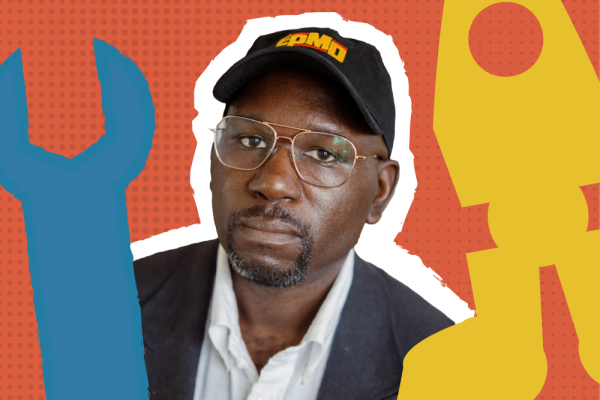Spider-Man: No Way Home is the end of a lot of things. It's the end of the (first) Marvel Cinematic Universe Spider-Man trilogy. It’s the end of a lot of speculation about how the multiverse will play into the MCU’s future (since the Loki TV show broke it open). But it also signals the end of the MCU’s innocence — and by extension, superhero movies in general. Spider-Man: No Way Home insists that true heroism looks markedly different from what superhero movies have offered thus far.
If, like most of us, you’re a casual comic book movie viewer, you might be confused at the hype for this latest outing for our friendly neighborhood Spider-Man. There have been two previous Spider-Men (with five films between them). Tobey Maguire starred in the original trilogy (2002-07), where he fought Willem Dafoe’s Green Goblin, Alfred Molina’s Doctor Octopus, and Tomas Hayden Church’s Sandman. Five years later, Andrew Garfield led two Amazing Spider-Man films (2012-14), fighting Rhys Ifans’ Lizard and Jamie Foxx’s Electro. Two years after that, Marvel re-introduced Tom Holland’s take on the webslinger (2016) in Captain America: Civil War.
All of that means that, in less than two decades, we’ve seen three different Peter Parkers (not counting Spider-Man: Into the Spider-Verse, which clearly influenced No Way Home and gave us at least one more Peter).
Readers beware: major spoilers beyond this point
If you’re confused, don’t worry — so is Holland’s Peter Parker when he’s suddenly facing off against Green Goblin and Doctor Octopus (yes, the guys from the other movies).
No Way Home picked up immediately following the previous film, Far From Home, which saw Peter’s identity revealed to the whole world. Peter watches his friends and Aunt May pay the cost of being associated with him, so he asks Doctor Strange to create a spell that will make everyone forget that Peter Parker is Spider-Man.
The spell malfunctions and begins to pull in people from every universe who know Spider-Man’s secret identity, including the five villains from the previous SONY films. Peter realizes they’ve all been plucked from the moment before they died at the hands of Spider-Man, and he decides to do something different. (Is Peter’s empathy for these men a result of the fact that half the world now considers him a villain, too?)
Peter’s decision at this moment — relatively early in the film — is shocking for fans of comic book movies. Since at least 1989’s Batman, the films almost always end with the villain dead or imprisoned (the state restoring order). Every Spider-villain from the previous two franchises died at the end of their films. The vast majority of Marvel villains never live to see a sequel.
The moral logic these films establish is simple, but brutal: If you oppose the status quo, you forfeit the right to your life. Your death is not only necessary, but serves the interests of those in power by reinforcing the status quo. (Perhaps a reason why the United States military sponsors these films.)
When Peter tells Doctor Strange he thinks he can redeem these villains, Doctor Strange tells him that the villains have a fate: to die. He says, “their sacrifice means far more than their deaths.” Strange isn’t twirling his mustache here; his goal is to save the countless lives in the multiverse. His logic is a ruthless utilitarian binary: The few must die for the good of the many.
This is the logic of empire. A life is valuable not in and of itself, but for how it affirms the empire.
Doctor Strange employs the language of ‘sacrifice’ to describe his vision for these villainous lives. The language is designed to obscure: Now that they exist in this universe, Doctor Strange is acting to send them back (to their deaths). He acts to kill them.
Murder is morally reprehensible, so the empire provides language that allows it to avoid taking responsibility in times where deadly force is deemed necessary. “Rioters” being injured or dying as a result of state violence is simply “collateral damage.“ Sacrifices must be made.
The logic of crucifixion functioned similarly. As James Cone observed in his landmark The Cross and the Lynching Tree, “Crucifixion was recognized as the particular form of execution reserved by the Roman Empire for insurrectionists and rebels.” Cone identifies crucifixion as a specific form of violence the state uses to justify its rule. Crucifixion was designed to uphold the state’s status quo. Rome turned an execution into a public spectacle. The message was clear: This is the logical end of anyone who declares themselves an enemy of the empire. The fault lies with this would-be revolutionary, for daring to imagine a world other than Rome’s.
The writer of Colossians insists that Jesus turned the empire’s logic on itself: “He disarmed the rulers and authorities and made a public example of them, triumphing over them in it (2:15).” God turned the cross against the crucifiers. We revealed ourselves as villains. But rather than destroy us, God chose to show us who we are in such a way that God created space for us to see ourselves and repent. God’s work on the cross is anti-empire because it refuses to divide the world into good guys and villains.
This redemptive move is something we’ve rarely seen in our modern superhero epics — until now: Peter Parker insists he can save these villains, give them a second chance by curing them — restoring them to their true selves.
The Orthodox Church in America understands salvation not as a legal declaration, but a healing. Drawing on Athanasius’ meditation on the Incarnation, Fr. Stephen Freeman writes, “Sin is not a legal problem because God is not a lawyer (and neither is a priest if he knows his business). Sin is a death problem. It’s far more like a disease than anything else.”
Jesus’ atonement isn’t God killing Jesus to take punishment for our guilt. Rather, giving up God’s own life, God created space for us to be healed. So, too, Peter wants to heal these men of both their ailments and their status as villains. He wants to alter the status quo. No wonder, then, Doctor Strange — the representative of the MCU’s status quo — becomes a villain of the story.
No Way Home is quick to illustrate how deeply this villainous narrative has its roots in us. When Peter finally faces off against the Green Goblin, he allows his grief to overcome his heroism. Peter himself is saved at this moment by his (spider-) community, who remind him that bitterness and vengeance aren’t markers of heroism. Instead, Peter sacrifices himself – literally wiping himself from existence – in order to save the multiverse and hold space for the villains to be healed. He breaks the utilitarian binary by offering up his own life.
The stakes of No Way Home are epic — not in terms of saving the universe (there is, thankfully, no giant third-act sky laser that needs to be punched to death), but in terms of the nature of these films themselves. Peter Parker dares to imagine a world where a true hero is not the one who is strong enough to vanquish his enemy, but one who is strong enough to hold space for his enemy to repent of their evil and be made whole. Such a person is more than a hero … they are a savior.
Got something to say about what you're reading? We value your feedback!







